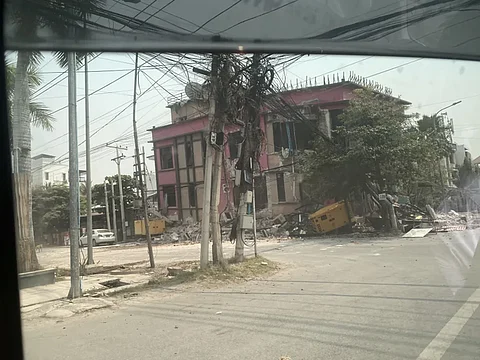Thousands Now Confirmed Dead After Devastating Myanmar Earthquake
On March 28, 2025, a powerful 7.7-magnitude earthquake struck central Myanmar, causing widespread destruction and loss of life. The earthquake, which struck near Mandalay, left thousands of people dead, injured, or missing. Initial reports indicate that over 1,600 individuals have been confirmed dead, with many more still trapped under collapsed buildings. Cities like Mandalay, Naypyidaw, and Sagaing have been among the hardest hit, with infrastructure failing and roads destroyed, severely complicating rescue efforts.
One survivor, Min Aung, a 34-year-old resident of Mandalay, recalled the moment the ground shook beneath him. “I heard a loud noise, and then everything just fell apart around me,” he said, his voice trembling. “I tried to reach my family, but the building collapsed before I could get to them. I don’t know if they’re alive.” His emotional plea reflects the horror many are facing in the wake of the disaster.
The humanitarian crisis worsened as the ongoing civil conflict further obstructed relief operations. Despite calls for a ceasefire to allow aid to reach the affected regions, reports suggest that military airstrikes have continued, exacerbating the suffering of civilians. The junta's actions have drawn international condemnation, with allegations that they targeted civilians fleeing the disaster. This has severely hindered the ability of aid organizations to assist those in need.
Neighboring countries and international organizations have rushed to offer support. India and China have sent teams to help with rescue efforts, and the World Health Organization (WHO) has dispatched medical supplies to the hardest-hit areas. The International Federation of Red Cross and Red Crescent Societies (IFRC) has launched an emergency appeal, hoping to assist 100,000 people over the next two years. However, logistical challenges remain, as blocked roads and damaged infrastructure make it difficult for aid to reach those who need it most.
A local volunteer, Soe Lin, described the immense challenges of getting aid to affected areas: “We’ve been trying to help, but the roads are blocked, and the military is stopping us from getting through. People are suffering, and we can’t even get to them.”
This earthquake has highlighted the ongoing vulnerability of Myanmar, where natural disasters are compounded by the devastating effects of civil unrest. As aftershocks continue to shake the region, the future remains uncertain, with many fearing further loss of life and escalating humanitarian needs.

